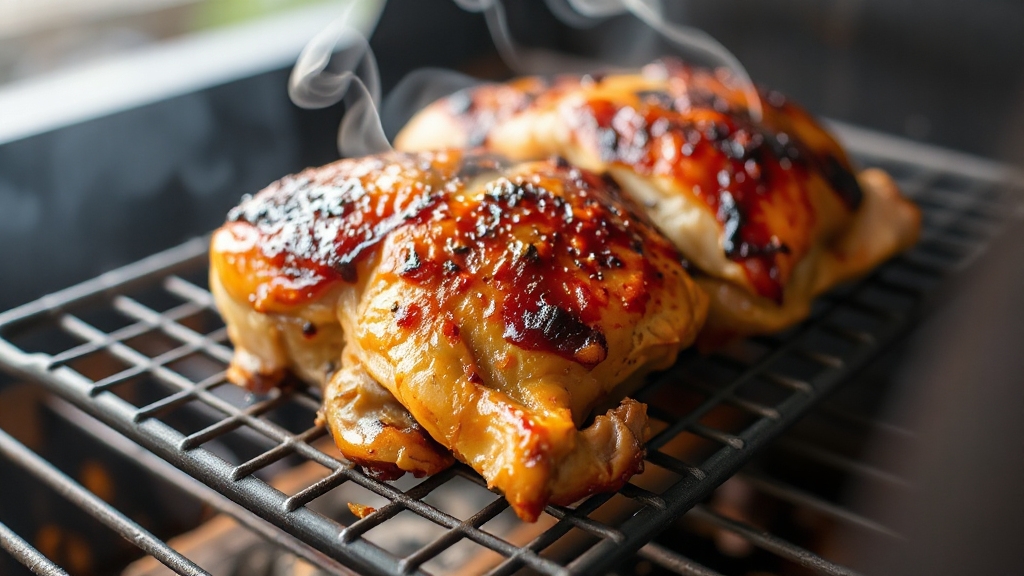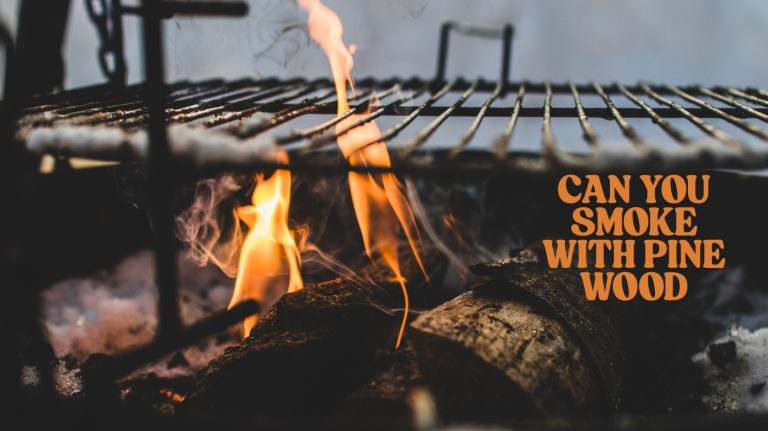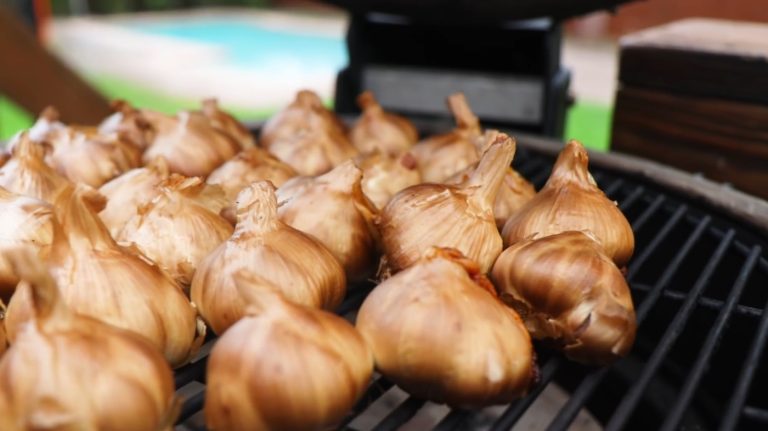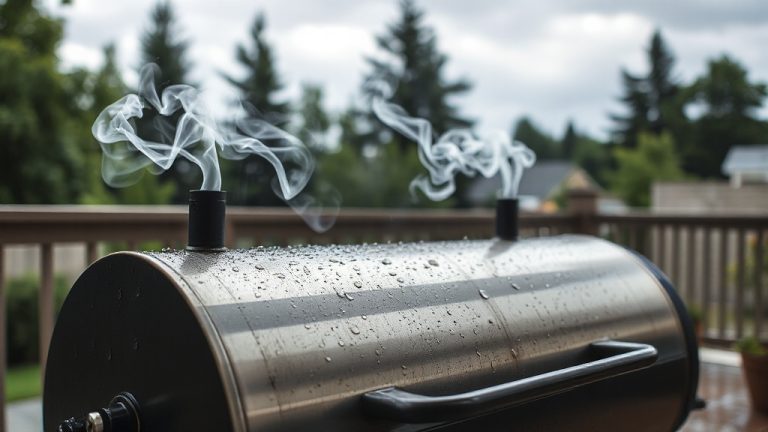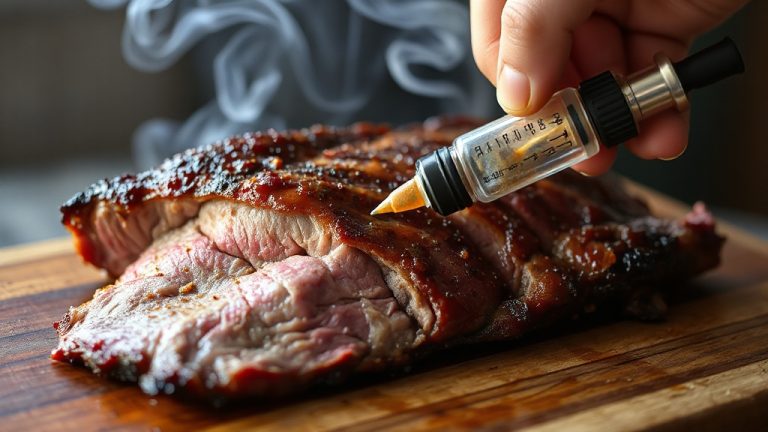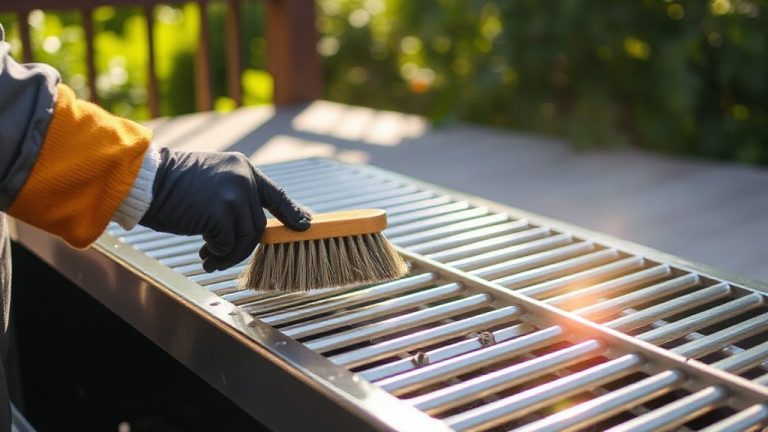How to Get Crispy Chicken Skin When Smoking: Turn Up the Heat
To get crispy chicken skin when smoking, start by patting the chicken dry and refrigerate it uncovered for several hours to air dry. Salt the skin evenly for a dry brine to draw out moisture and tighten the skin.
Smoke at a moderate temperature between 275°F and 320°F, finishing with a higher heat burst to render fat and crisp the skin. Rest the chicken uncovered on a rack to keep it crunchy. Keep going to discover expert tips on seasoning and serving.
Key Takeaways
- Thoroughly dry the chicken skin using paper towels and air dry uncovered in the fridge for at least an hour before smoking.
- Apply a dry brine with kosher salt and optionally baking powder, refrigerating uncovered for 6–24 hours to tighten the skin.
- Smoke at a low temperature initially (around 225°F), then increase heat to 275–320°F to render fat and crisp the skin.
- Lightly coat the skin with neutral oil and use dry rubs with cornstarch to enhance browning and texture.
- Rest the smoked chicken uncovered on a wire rack for 10–20 minutes to maintain crispiness before serving.
Preparing the Chicken for Optimal Skin Crispiness
Before you start seasoning or smoking, make sure to thoroughly pat the chicken dry with paper towels to remove any surface moisture. This step is essential because wet skin prevents crisping.
Next, place the chicken on a wire rack so it doesn’t sit in its own juices, which helps the skin dry evenly. Elevating the chicken also prevents sitting in its own juices during drying, which improves skin texture. Using a butcher paper wrap during resting can help retain moisture without sogginess.
Elevate crispiness by placing chicken on a wire rack to avoid sitting in its juices.
Refrigerate the chicken uncovered for at least four hours, or up to 24, to further dry out the skin. Before smoking, let it rest on the rack in the fridge for about an hour to guarantee the surface is as dry as possible.
Avoid spritzing or adding moisture once the chicken’s on the smoker, since that traps steam and stops the skin from crisping properly.
Mastering Dry Brining and Air Drying Techniques
Once you’ve dried the chicken thoroughly, the next step to achieving that coveted crispy skin is mastering dry brining and air drying.
Start by evenly applying about 2 tablespoons of salt over the chicken, optionally mixing in baking powder or black pepper to enhance browning and texture. Refrigerate the chicken uncovered on a rack for six to 24 hours.
This process pulls moisture from inside the meat to the surface, which then reabsorbs, tightening and darkening the skin. Proper salt distribution is crucial to ensure consistent flavor and moisture retention throughout the chicken.
After brining, air dry the chicken uncovered in the fridge for at least an hour to evaporate surface moisture, preventing sogginess during smoking. Using kosher salt specifically, like Diamond Crystal, is recommended for optimal flavor and moisture retention.
This combination of dry brining and air drying is essential you’ll notice the skin firm up, setting the stage for that irresistible, crispy finish once smoked.
Setting the Right Smoking Temperature and Time
Although achieving crispy chicken skin starts well before the smoker heats up, setting the right temperature and timing during smoking is essential to guarantee that perfect texture. Keep your smoker between 275°F and 320°F to render fat efficiently without drying the meat.
Start with a brief low-temp smoke at around 225°F for about 30 minutes to absorb flavor, then raise the heat to crisp the skin. Cooking at Higher Temperatures helps cook the fat into the meat more effectively, reducing cooking time and improving skin texture.
Using a wire rack or mesh grill pan can help maintain stability and even exposure during smoking, promoting better skin crispiness. Target an internal chicken temperature of 165°F to ensure doneness while preserving texture.
- Maintain consistent smoker temperature to avoid rubbery or soggy skin.
- Avoid spritzing or wrapping the chicken, which traps moisture and softens skin.
- Use a reliable thermometer to monitor both smoker and chicken temperatures precisely.
Enhancing Skin Texture With Seasoning and Cooking Methods
Getting the smoking temperature and timing right sets the stage, but enhancing your chicken skin’s texture comes down to how you season and prepare it before and during cooking.
Start by patting the skin dry and air-drying the chicken uncovered in the fridge to dehydrate the skin. Use a dry rub with salt and cornstarch to draw out moisture and promote crunchiness—avoid wet marinades that cause sogginess.
This is crucial because removing excess moisture ensures the skin crisps properly. Using seasoned, dry wood like oak can add a subtle, balanced smoky flavor that enhances the overall taste without overpowering the skin’s texture.
Pat the skin dry and air-dry in the fridge, then use a salt and cornstarch dry rub for maximum crunch.
A light dusting of baking soda can improve browning by raising pH. Coat the skin lightly with neutral oil to help even browning without steaming.
During cooking, maintain medium-high heat and finish with a high-heat phase to rapidly render fat and crisp the skin. Heat facilitates moisture evaporation and breakdown of connective tissue, both essential for achieving the ideal texture.
Incorporating oak wood smoke, known for its slow burn rate, helps maintain consistent heat and flavor throughout the cooking process. Placing the chicken on racks enhances air circulation, ensuring an even, irresistible crunch.
Resting and Serving Tips to Maintain Crispy Skin
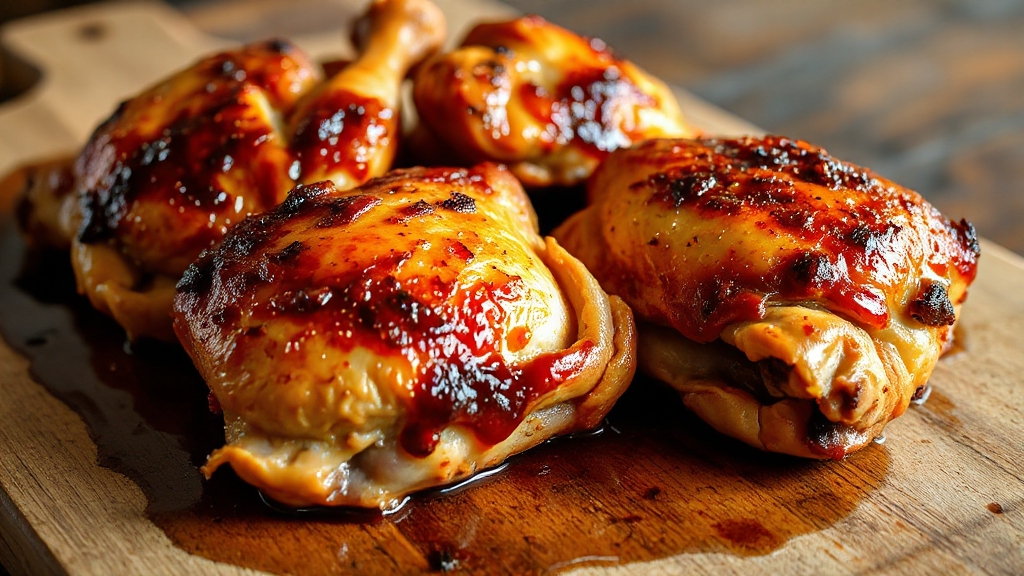
To keep your smoked chicken skin crisp after cooking, you’ll need to pay close attention to how you rest and serve it. Rest the chicken uncovered or loosely tented with butcher paper on a wire rack for 10 to 20 minutes.
This prevents moisture buildup that softens the skin. Allowing the skin to remain dry during resting is crucial because it helps maintain its crispiness and texture. Proper ventilation during resting also aids in reducing humidity impact on the skin’s surface.
Avoid foil or tight wrapping, which traps steam and ruins the crispness. When serving, carve with a sharp knife to keep the skin intact and serve promptly on warm, dry plates to avoid condensation.
Follow these tips to maintain that perfect crunch:
- Rest on a wire rack uncovered or loosely tented to allow airflow.
- Serve soon after resting, avoiding sauces that add moisture.
- Use dry seasoning and carve carefully to preserve texture.
Frequently Asked Questions
Can I Use Different Wood Types to Affect Skin Crispiness While Smoking?
Think of wood smoke as the brush painting flavor on your chicken, but it’s not the artist behind crispiness. You can choose hardwoods like oak or hickory to provide steady heat and clean smoke, which helps your skin render fat properly. Avoid resinous woods that leave sticky residues.
While wood affects flavor, crisp skin comes mainly from temperature and drying techniques, so pair your wood choice with high heat and proper prep for that perfect crunch.
Does the Chicken’S Breed or Age Influence How Crispy the Skin Gets?
Yes, your chicken’s breed and age definitely influence skin crispiness. Younger birds usually have thinner, more tender skin that crisps faster. Older chickens have thicker skin with more fat and connective tissue, making crisping trickier.
Heritage breeds often have fattier, thicker skin needing adjusted cooking. Knowing this helps you tailor cooking time, temperature, and prep to render fat properly and get that perfect, crispy skin every time.
Is It Better to Smoke Chicken Skin-Side up or Down for Crispiness?
Imagine you’re smoking chicken and want that perfect crunch. You’ll get crispier skin by placing the chicken skin-side up. This exposes the skin directly to heat, helping moisture evaporate and fat render evenly.
Skin-side down often traps steam against the surface, making it rubbery. Starting skin-side up guarantees consistent crisping without flipping, especially if your smoker’s heat comes from below.
Can Wrapping Chicken in Foil During Smoking Impact Skin Texture?
Yes, wrapping chicken in foil during smoking definitely impacts the skin texture. When you wrap it, moisture gets trapped, creating a steaming effect that keeps the skin soft and mushy instead of crispy.
The foil prevents the skin from drying out and rendering fat properly. If you want that crunchy, golden skin, it’s best to avoid foil and expose the chicken directly to heat and smoke.
How Does Altitude Affect Smoking Temperature for Crispy Chicken Skin?
At higher altitudes, the thinner air means less oxygen, so your smoker burns fuel slower and heats unevenly. You’ll need to crank up the temperature slightly above usual sea-level settings aim for around 300°F to 350°F to properly render fat and crisp the skin.
Keep airflow increased to boost heat transfer, avoid moisture buildup, and monitor temperatures closely. Otherwise, your chicken skin might turn rubbery instead of crispy.
Rest to Impress: Cooling on a Rack Makes All the Difference
Think of smoking chicken like painting a masterpiece you start with a blank canvas, preparing your bird with dry brining and air drying to set the perfect base. Then, you carefully layer in smoke and heat, building texture and flavor like brushstrokes.
Finally, resting your chicken is the frame that holds it all together, preserving that golden, crispy skin. Follow these steps, and you’ll create a crispy work of art every time.
